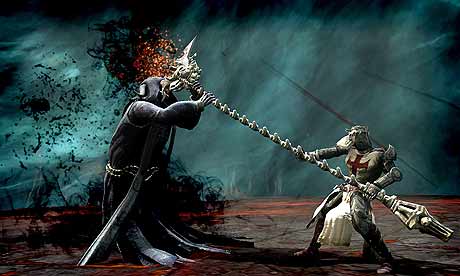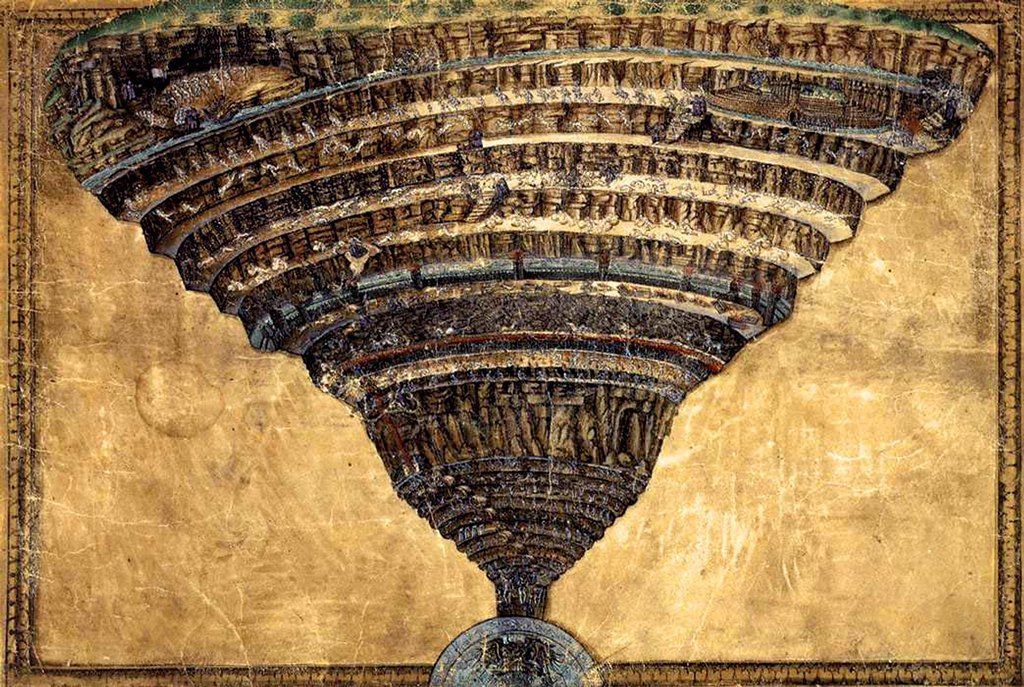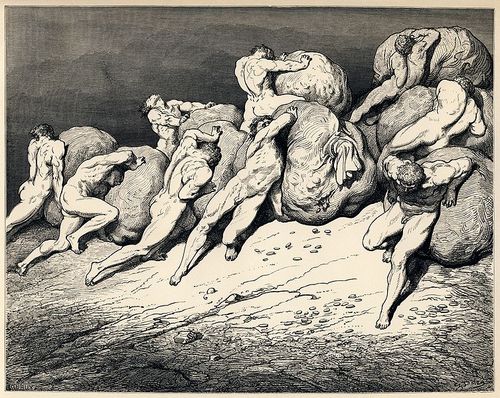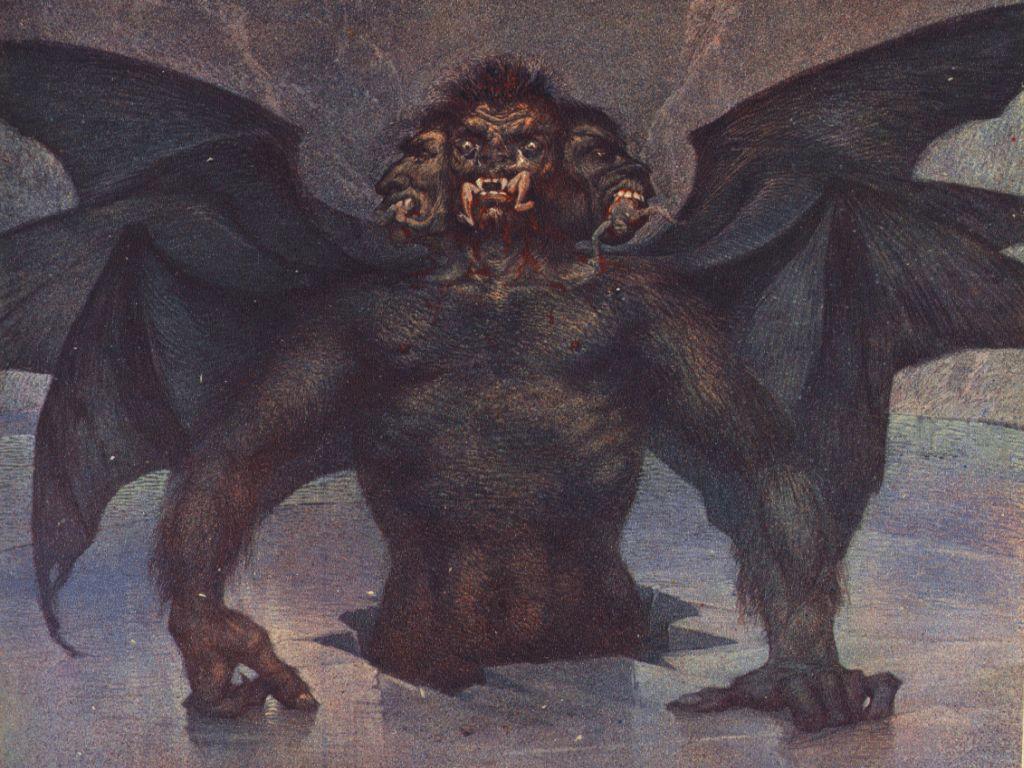Dante’s “Inferno” poses as a written vehicle for demonstrating a Christian moral code set for society, by showcasing punishments set unto those who sin. Sin is regarded as an act that violates a known moral rule. In Christianity, not only does it encompass physical action, but also though and internal motivations and feelings.
The “Inferno” is the telling of Dante’s journey through the nine circles of Hell, guided by the Roman poet Virgil. Each circle, or ring, represents a different category of sin, and are also the resting places for those who have committed those sins. Allegorically speaking, in essence, “Inferno” describes the recognition, and ultimately, the rejection of sin. We will focus on four of those elements, including: sex, war and violence, the distribution of wealth, and food and alcohol.
The second circle of Hell is intended for those overcome by lust. Dante condemns these people for letting their sexual appetites sway their reason. These are the first to receive actual torturous punishments in hell. These souls are whisked around here and there by the winds of an extremely violent storm, without the hope of ever being able to rest. This is a symbolization of the power of lust and its ability to buffet one around needlessly and aimlessly. One of Christianity’s strongest convictions is to resist the temptations of the flesh, including sexual desire.
Another temptation of self-indulgence is that of gluttony. That is, the over-consumption of food, drink, and/or intoxicants. Those who commit this sin are sent to the third circle of hell, where they are forced to lie in a disgusting cesspool of mush. The gluttons lie here blinded and unknowing of those surrounding them, symbolizing the frigid, self-centered sensuality of their lives. Just as lust has shown its true nature in the storms of the second circle, here the slush reveals the true nature of sensuality. This includes not only overindulgence in food and drink, but also other kinds of addictions. In Christianity, gluttony is considered on of the 7 deadly sins, and this story demonstrates the repercussions of overindulgence.
Greed is considered worldwide to be a horrible virtue. On the contrary, it could even be categorized as a demonstration of the non-virtuous. Unfortunately, it is a concept that almost everyone today takes for granted. Those who are considered greedy are sent to the fourth circle of hell. In the “Inferno” we find even the most upstanding citizens of the Christian world, including Popes and Cardinals, who succumb to this awful mindset. The punishment for these people is to fight each other forever, using giant weights as weapons, only being able to maneuver them with their chests. Thus demonstrating to the audiences of this story, the punishments of those who act against the moral lifestyle of humility and piety.
Moving ahead to the seventh circle of hell, we will find the violent. The seventh circle is composed of three smaller rings. The outer ring is the home of those who are violent against other people and property. These people are immersed in a river of boiling blood and fire, to a level that correlates with their sins. In the middle ring, those who are violent towards themselves, also known as suicide, are housed. They are unique among all the other souls in hell, because they do not endure hell in their own bodies, but as gnarled thorny bushes and trees. The trees are a metaphor for the state of mind in which suicide is committed. Finally, the Inner ring is final resting place of those who are violent against God and nature. They all live in a desert of flaming sand with fiery flakes constantly falling from the sky. All three rings have horrible punishments and can only deter the audiences from wanting to commit these acts of sin. This only supports the claim that this piece of literature contains an implied moral code.
Hell is a Christian conception, a place where all the sinners go after death. It seems as though, after reading this piece, that it would be almost impossible to get into heaven. Even those who are baptized and considered leaders of the faith aren’t safe from the fiery depths of hell. What chance does an everyday citizen have, when temptation lies around every corner, and the leaders of their own faith cannot refrain themselves from indulging. Hopefully, this place does not exist, because if it does, we are all in grave danger.
Whether hell exists or not, it does not matter, for it exists in the minds of those who chose to believe. For these people, the fear it invokes is enough to help guide them to live moral lives. As depressing as it may seem, fear is a powerful method for enforcing established moral codes, and Dante’s “Inferno” may be one the most effective means of distributing that fear. Beautifully written fear.









No comments:
Post a Comment